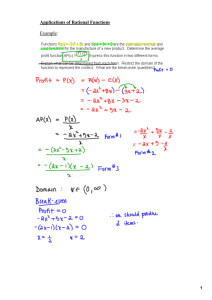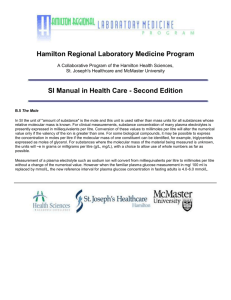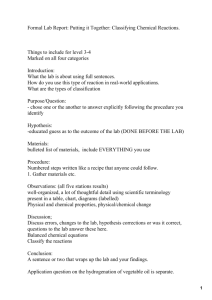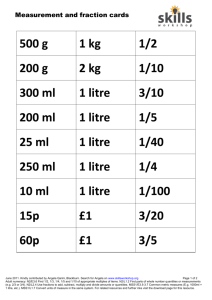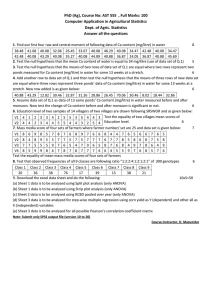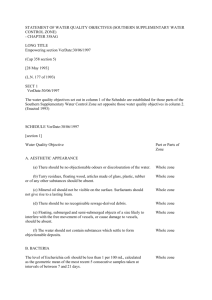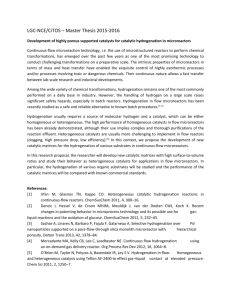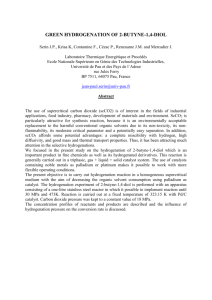Multiproduct Production A Case Study
advertisement
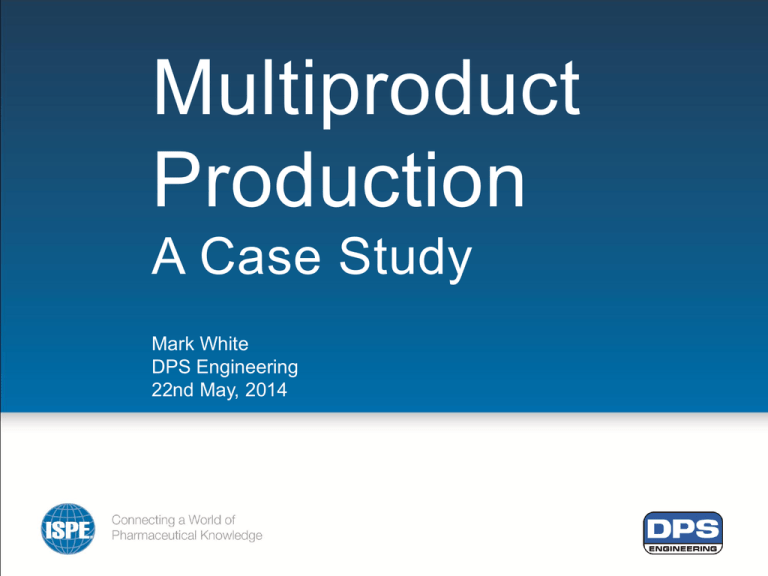
Multiproduct Production A Case Study Mark White DPS Engineering 22nd May, 2014 Overview ▶ Current Trends ▶ Project Brief & Design Evolution ▶ Design Requirements ▶ Ongoing & Future Development Current Industry Trends Rebalancing of Manufacturing Assets • • Large Scale API hardest hit Evolution & Repurposing of Manufacturing Sites Fewer ‘Blockbuster’ drugs in Pipeline • • Focus on Speciality Pharma / Patient Needs e.g. Oncology Smaller Volumes / Higher Potency Drugs (‘Nichebusters’ ) Need to get to Market Sooner • • Reduced Development Time Faster Production of Kilo Quantities Lab Scale to Batch Scale • • Scale Up Efficiency Reduced Turnaround Times Small Scale Project Drivers ▶ Small Volume “Niche” Drug Products ▶ Fast & Flexible Production of (Early Phase) Pharma Materials ▶ Sustainable Production Technology ▶ Reduced Capital Investment for NPI (New Product Introductions) ▶ Negate Bulk API Plant Operating at Inefficient Volumes DPS Project Brief • Reactor Capacity not suitable for low volumes • Separate Production ‘Suites’ • Product introductions slow & costly • Manufacturing & Isolation Capability • Make best use of existing real estate • European Initiative • Futureproof Investment • Reuse existing utility services Scope Evolution Client Led Concept Front End Study Detailed Design • Concept Study (Focus on Feasibility & OOM Cost) • Focus on Layout & Ancillary Requirements • Interactive Cross Functional Team • Challenge Equipment Train • Develop 10% Cost Estimate (Project Budget) • Emphasis on 3D (30% / 60% / 90%) Reviews • Client Co-location and Interaction • Detailed Design of Long Lead Equipment in Parallel • ‘Fast Track’ Design Process Equipment Train Identified Key Constraints € Approved Budget Extensive ‘Value Engineering’ Throughout Project Schedule • OOM at Concept Stage to allow Project Funding Request • Use of Repurpose Equipment & Infrastructure • Estimated 18 months Project Duration (standard approach) • 10% at FES Stage (Higher than funding approval) • Regular Cost Trending & Design Change Management • Market Driven Requirement 12 months (fast track) Design Development Design Development Highly Interactive ISO Output from ‘Issue for Hazop’ Stage Pre-IFC and Post-IFC Changes Developed • Significant P&ID & design document reviews • Risk acceptance by client • Approved (& tracked) or rejected • 3D model used extensively for formal reviews • Bulk MTO generated at frequent intervals • Traceability throughout the project lifecycle Design Requirements & Key Functionality Equipment Scope v. Process Fit Multiple Process Fit Scenarios Evaluated & Challenged Allow Use of ‘Flow Skids’ (Footprint & Hook-Up) Established at Concept Stage (Primary Design Foundation) Hydrogenation Sizing Reevaluated Scope 5-25kg Suite 1 Suite 2 4 x Reactors (2 x 400 / 2 x 600 litre) 3 x Reactors (100 / 160 / 250 litre) • • 1 x Head Tank, Drum & Reagent Booth • 2 x Head Tanks, Drum & Reagent Booth • Contained Tray Dryer & Dual Tray Dryer • Peeler Centrifuge (22 litre) • 2 x Receivers (400 litre) • Agitated Filter Dryer (0.3m2) • HS Wet Mill, 2 x Receivers (1,000 litre) • Hydrogenation • 1 x Reactor (400 litre) • Catalyst Filter MOC Selection Agreed list of Solvents & Product Materials Specific Hastelloy / Hastelloy Free Reactors per Train ‘Balance’ of Exotic Materials (GLCS, Hastelloy ‘C’, Tantalum, Stainless) Layout Development via 3D Interactive Reviews Central Technical Space Servicing Two Separate Suites (c/w Airlocks) Layout / Segregation Common Staging & Dispensing Area Hydrogenation Area Separate (shared services) Adjacent Office & Support Areas Interconnectivity Transfer Manifolds Significant use of Flexible Hoses Mobile Head Tanks & Receiver Vessels Flow Skid Utility Plates Automation Strategy Existing Delta-V (No Recipes) Reduced Automation Emphasis on Manual Operation, Operator OIT’s Hardware / Software Interlocks defined during PHA review Detailed approved URS documents for all systems Containment • General Operation to OEB3 (100-10 µg / m³) • Charging of OEB4 via Specific Technology (10-1 µg / m³) ⁻ Use of Split Valves • Enabled for OEB5 Category Material (<1 µg / m³) ⁻ Flexible ‘Bags’ ⁻ Isolation Glove-boxes Cleaning • Cleaning Philosophy Document Developed • Simple Approach ⁻ Recirculation via Process Pipework ⁻ Spray-balls Integrated where necessary ⁻ Vessels can be cleaned in isolation • Flex Hoses Cleaned-In-Place Ancillary Services • Weak Effluent for General Waste Streams • Use of Existing DFB coupled with New Glovebox • Strong Effluent for Process Waste • Common Access, Egress & Staging Area • Repurpose Tanks Employed • New Airlock Included for Pressure Segregation • HEPA Filtered Supply to Dispensary Make-Up • Liquid Ring System (Process) • Dry Running (Isolation) • Repurpose Vacuum System for Contained Tray Dryer • 50/50 Glycol System c/w Tempered Condenser Loops • -20 to +150°C Range • Specific Vessel Enabled for Low (-80°C) Temperature Operation • Separate Acid & Base - tied into existing Abatement Device • Repurposed Tanks Employed • Direct to Atmosphere for H2 Evolving / Hydrogenation Reactors Ongoing & Future Development Flow Skid Hydrogenation Area (CM phase) • Design complete & Reviewed • Installation & CM Support in Progress (Re-Design & CM) • Design Development • Confirm Process Fit & Design Basis ‘Phase II’ development (‘Future’) Key Project Statistics 2,100 Piping Isometrics 2,910 L Total Reactor 67 No. P&IDs 29 Separate Systems 7,500 m Pipework Lessons Learned Engage with All Stakeholders from Outset ⁻ Include in Early Reviews & 3D Interactions ⁻ Solicit Opinions Value Engineer From the Outset ⁻ Agree Scope Early – Late Design Changes are Major Impacts ⁻ Track All Changes Optimise trade-off between ‘Best’ Layout v. Minimum Hold-Up ⁻ Vertical Stack-up Preferred ⁻ Never Base Design on Large Scale API Equipment Never Underestimate Piping or Instrumentation Design ⁻ Maintenance and Operator Access Must be Incorporated ⁻ Only Vessels are Small Scale! Flexible Approach Project Success Integrated Team www.dpseng.com
